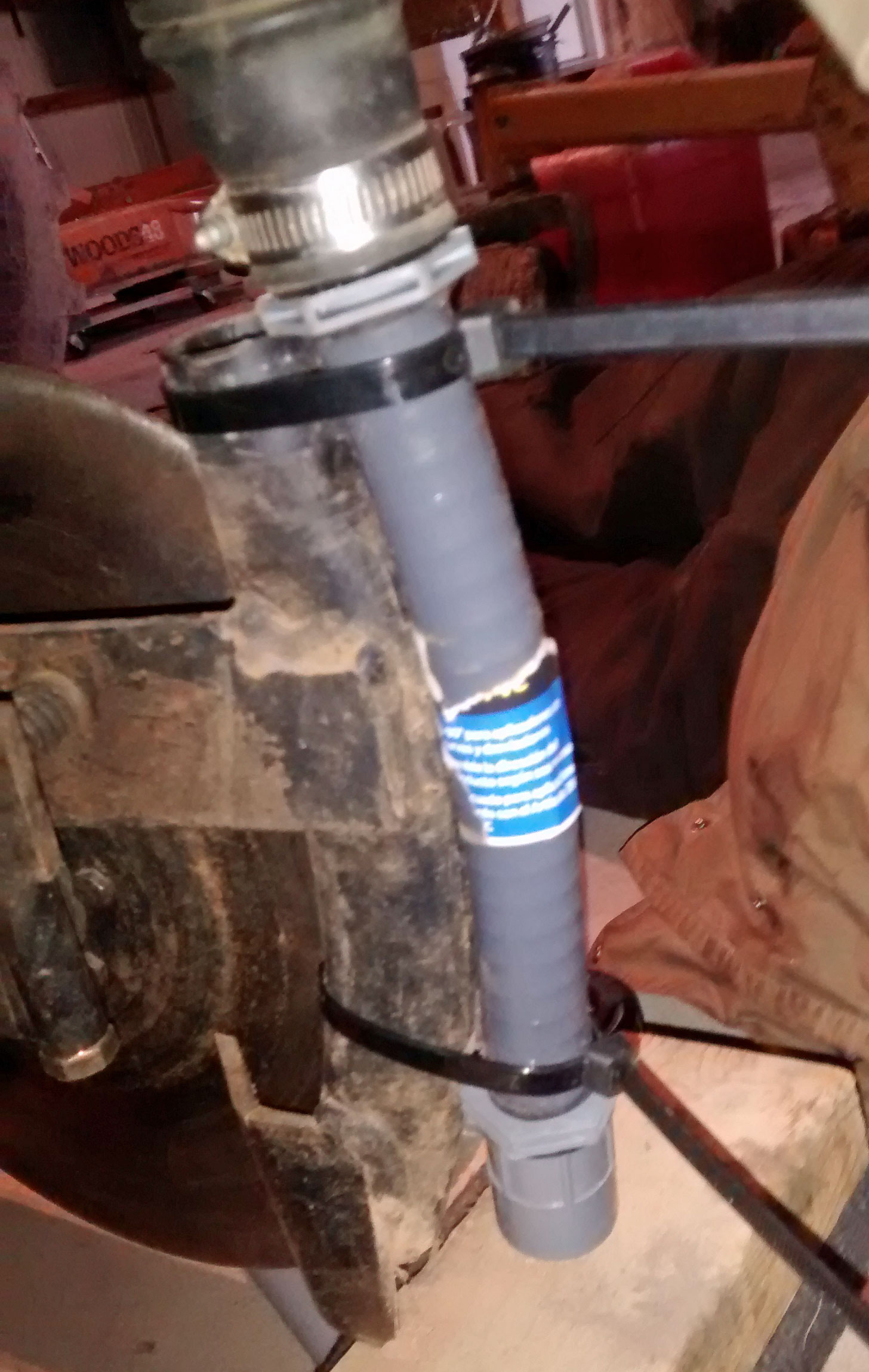yoderjac
5 year old buck +
It was on a 60+ HP Deere. It was a 6' model Kasco, I believe.
Mine is a 4' model. I'm sure the 6' is heavier.
It was on a 60+ HP Deere. It was a 6' model Kasco, I believe.
I have a similar story as jack in I picked up a used Kasco for $3,200. It has a large and small see box and at 4' my 35hp JD Picks it up with ease.
From what I can see it should be an improvement over my JD planter (which I still have). I have sandy soil so I'm hoping to improve my OM and to plant a broader list of seeds.
The seed tube clogging, we will see what occurs.

That looks great Jack, nice improvement. I'll need to give that a try.When I got to the farm today, it was raining, so instead of field work, I decided to work on the seed drill. I added one more seed tube like the others and have one more to go. I also made the first seed bin divider:

I cut a piece of sheet metal with shears according to the template. I inserted it into the bin. I'm using magnets to hold it in place. It seemed to work well, so I plan to make more.
Thanks,
Jack
That looks great Jack, nice improvement. I'll need to give that a try.
I bought the 6' model last year and planted about 20 acres from corn, soybeans to winter mixes. Everything I have planted has done great. I would not hesitate to recommend the purchase of one for someone wanted to do no till food plots. Expensive purchase but still way cheaper than other models.

We're approaching planting time in my area and with that I'll be trying the Kasco Drill to plant clover. I've always had issues with Seed rates with clover as the seed is so small. I'm planting a small area, 1/2 acre, so I'm not using allot of Seed for a Drill. Has anybody used a medium in their Drill to improve seed coverage?
What have you seen that works or what would you try?
Yep, I have the same issue, without the perfect seed bed its difficult to get the seed covered. A press wheel would help allot. My simple flex 71 planter does a much better job of seed control and covering the seed but you need to till the soil. I also was wondering if the front disk would work better if it was a coulter so it made a larger seed trench.The main issue I have had with mine is that the cultipacker doesn't really cover anything unless just the right dirt and the chain comes off if you put to much down pressure
The main issue I have had with mine is that the cultipacker doesn't really cover anything unless just the right dirt and the chain comes off if you put to much down pressure
Did this modification work good for you. As I too have trouble keeping seed tube on clogged. ThanksKASCO NOTILL VERSADRILL UPGRADE ATTEMPT
As you may know from some of my other posts, I've always had an issue with debris when using my Kasco no-till versa-drill. Debris builds up between the openers and the mud scrapers and eventually clogs the planting foot. I'd done a lot of messing around adjusting things. Some rows don't seem to have an issue but others do. I can't figure out what the difference is. I finally came up with an idea for modifying it.


I went to Lowes and bought a 3/4 inch flexible conduit fitting: https://www.lowes.com/pd/CARLON-3-4-in-Conduit-Fitting/3659290. I used cable ties for now to secure it to the existing planting foot. The lower opening is about an inch above the opening in the bottom of the planting shoe. It should not clog. The only issue I can see is that seed may be moving too fast and bounce out of the trench. If that happens I'll put a smaller fitting on the bottom to slow it down. I simply connected the seed tube to the top of the fitting instead of the planting shoe.
I plan to try this out. If it works, I'll probably replace the cable ties with hose clamps.
The next thing I plan to try to do is to make dividers for the seed box. On occasion I may want to plant one kind of seed in one row and another type in another row. If the seeds are about the same size they should meter at about the same rate.

I just used a piece of cardboard to make a template. When I get home, I'll use my table saw to cut a thin piece of plywood to see if it works. I plan to hold it in place by simply placing magnets on each side.
Thanks,
Jack
Did this modification work good for you. As I too have trouble keeping seed tube on clogged. Thanks
